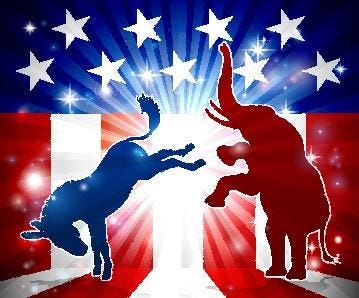It shouldn’t be unexpected that as we get closer and closer to political silly season – and then further and further into it – that the admirable traits we seek in leaders seem harder and harder to find. We live in divisive, hyperpolitical times, to an extent most historians compare to none less than the Civil War.
That’s pretty heady stuff. And it has the potential for chaos far beyond the walls of Congress. Businesses have all they can handle on a regular daily basis; more tremors they don’t need.
Before another word is said, this post – and perhaps others to follow – has nothing to do with politics or politicians who claim to be our leaders. It does, though, look at the challenges leaders have amidst such turbulence, vitriol, and animosity. The more contentious the political atmosphere, the more disruptions we see in the markets: stock and job markets in particular. The rougher it gets, the harder a leader’s job becomes.
The Source of Leadership
So how does a leader lead through a rough stretch? Not by short-term reactions to the immediate urgency of the moment, but rather by reliance on the foundations of leadership that have been in place for millennia.
What Is A Leader?
For 15 years I taught teo leadership course in two graduate programs: MBA and MAS. My first responsibility was to set in place an unassailable definition of a leaders, one upon which we could bas everything that would ensue in the course,
That definition – resulting from research, debate, and deliberation – has evolved over the years, but here’s what we used:
A leader is a person who has – and articulates – a vision, creates change, inspires others to achieve mutual goals, and builds and maintains effective working relationships – all while setting the highest standards of ethical thought and behavior.
There they are: five basic pillars and one foundation.
Pillar 1. Vision.
There, in one word, is a leader’s job.
Pillar 2. Communication (articulation).
It’s a leader’s most critical skill.
Pillar 3. Change.
Leaders lead between paradigms; managers manage within paradigms.
Pillar 4. Inspires.
More than motivation. We’re supposed to be self-motivated, but inspired by leaders.
Pillar 5. Working relationships.
Great leaders build great teams.
The Foundation:
Ethics.
Leaders who are tethered to these moorings stand a far better chance of keeping their organizations on a steady path and fee of the awkward passions of the moment. Those who aren’t will probably be spending precious time finding excuses and scapegoats.
Take any one of these – the five pillars or the foundation – and this model falls apart. Maintain them all, and hyper-politics will come and go.
Read the full article here









